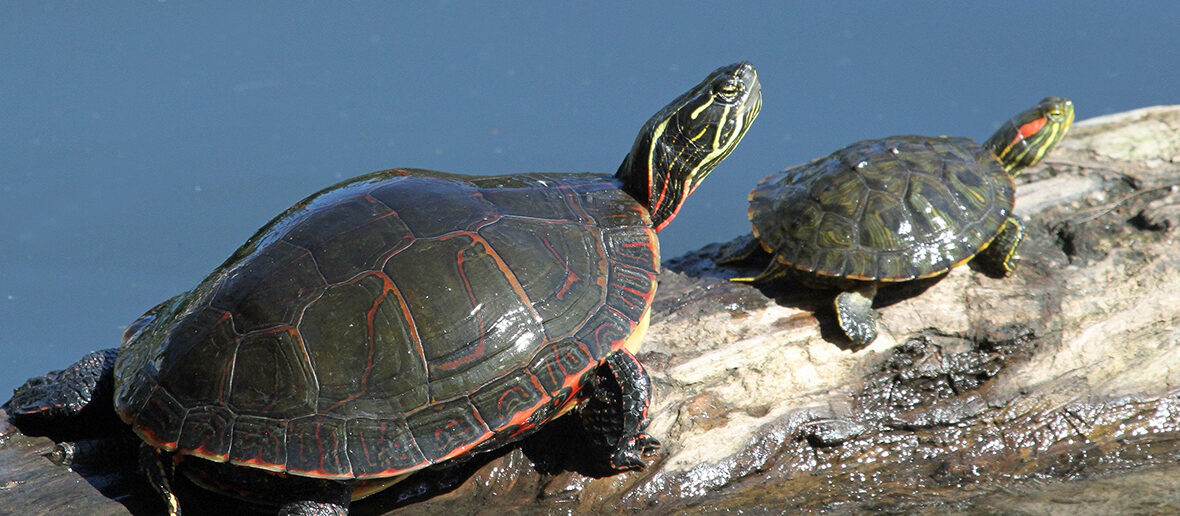
The painted turtle is the only North American aquatic turtle species that can be found throughout Canada, the United States, and Mexico. They extend from the west coast to the east coast of all 3 countries. Even though they face the threats of habitat loss and destruction at the hands of residential and commercial developments; habitat division at the hands of roads and railroads (which also causes vehicle strike – being hit by vehicles); competition from overfishing and reduction of food through harvesting aquatic resources; and pollution, they are still listed as Least Concern by the IUCN. Their population trend is stable.
First the Stats…
Scientific name: Chrysemys picta
Weight: Up to 18 ounces
Length: Up to 7 inches
Lifespan: Up to 30 years
Now on to the Facts!
1.) While these turtles prefer fresh water, they have been seen in brackish (partially salty or saline) water as well.
2.) Their webbed feet aid in navigating their watery world.
3.) A group of turtles is called a bale, creep, dole, nest, or turn.
4.) These turtles are gregarious and sometimes seen in doles of up to 50 turtles!
5.) Seeing as turtles are ectothermic (derive their heat from external sources), they need to spend hours each day basking in the sun in order to thermoregulate (control their temperature).
But wait, there’s more on the painted turtle!
6.) The painted turtles often aestivate (a type of hibernation for reptiles) or they may actually hibernate, like mammals, during cold winter months. In the southern locales, they may not enter into aestivation or hibernation at all.
7.) They rest for the winter months by burying themselves in mud, taking up residence in abandoned muskrat burrows, or they may hide out in pastures or wooded areas.
Did you know…?
Painted turtles bask just about anywhere, even on the backs of common loons, covering their eggs.
8.) When aestivating or hibernating in the water, then will bury themselves in mud and breathe through their cloaca (anus).
9.) Aquatic insects, fish, crustaceans, algae, aquatic vegetation, and carrion (dead animals) are all on the menu.
10.) When searching for a nesting site, the gravid (pregnant) female will partake in a strange phenomenon, that of pressing her throat against the ground in various locations. This behavior is not fully understood, but it is presumed she is looking for the correct moisture type in the soil and/or the desired temperature.
But wait, there’s still more on the painted turtle!
11.) Females lay up to 15 eggs that hatch in up to 80 days.
12.) Hatchlings grow fast and sometimes double their size in just 1 year.
13.) Females tend to grow faster than males.
14.) Raccoons, otters, mink, foxes, dogs, and sometimes larger mammalian predators all prey on these turtles.
Now a Short Painted Turtle Video!
Be sure to share & comment below! Also, check out the Critter Science YouTube channel. Videos added regularly!
Want to suggest a critter for me to write about? Let me know here.
Some source material acquired from: Wikipedia & IUCN



